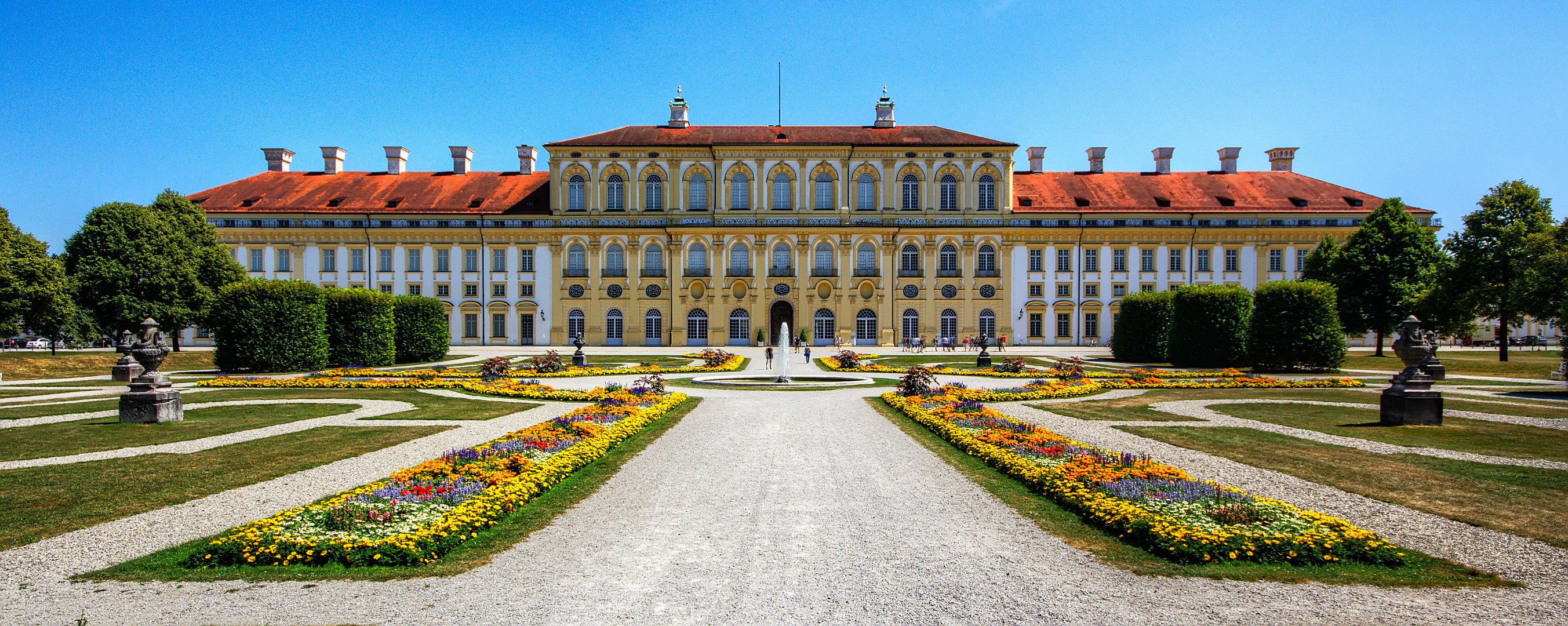|
Siegfried Obermeier
__NOTOC__ Siegfried Obermeier (Munich, 21 January 1936 – Oberschleißheim near Munich, 21 January 2011) was a German author of historical novels and popular history books. He was editor of The Secret Diaries of Ludwig II of Bavaria 1976. In 1978 he issued his first novel, initially under the penname Carl de Scott, a novelisation of the second life of Judas Iscariot. His Jesus in India book "Starb Jesus in Kaschmir?" made it to the Year Bestseller List of the Spiegel in 1983. Works Non fiction * Tourist guidebook to Carinthia 1974 *''Katia Mann, Meine ungeschriebenen Memoiren'', - The unwritten memoires of Katia Mann Frankfurt 1974 * Münchens Goldene Jahre (The Golden Years of Munich) 1976 * Walter von der Vogelweide Der Spielmann des Reiches. Biography 1980 * Richard Löwenherz. König, Ritter, Abenteurer - Richard the Lionheart Biography 1982 * Starb Jesus in Kaschmir? Das Geheimnis seines Lebens und Wirkens in Indien 1983 * Das geheime Tagebuch König Ludwig II. (editor) 19 ... [...More Info...] [...Related Items...] OR: [Wikipedia] [Google] [Baidu] |
Oberschleißheim
Oberschleißheim () is a municipality in the district of Munich, in Bavaria, Germany. It is located 13 km north of Munich (centre). As of 2005 it had a population of 11,467. Oberschleißheim is best known for the Schleissheim Palace and the Flugwerft Schleissheim next to the airport housing the airplane department of the German Museum. The airfield is also home to one of the five German Federal Police helicopter squadrons. Established in 1912, the airfield was the first in Bavaria. During World War II, a subcamp of Dachau concentration camp was located here. In the early 20th century, Schleißheim was home to author Waldemar Bonsels, who was inspired to write his " Biene Maja" by a gnarly tree in the woods nearby. History Schleißheim was first mentioned as “Sliusheim” in 785. The small church of St. Martin in Mallertshofen is a Romanesque church which still exists. In the Year 1315 the name of the village became “ Sleizheim”. Between 1616 and 1623 Duke Maximi ... [...More Info...] [...Related Items...] OR: [Wikipedia] [Google] [Baidu] |
Akhnaton
Akhenaten (pronounced ), also spelled Echnaton, Akhenaton, ( egy, ꜣḫ-n-jtn ''ʾŪḫə-nə-yātəy'', , meaning "Effective for the Aten"), was an ancient Egyptian pharaoh reigning or 1351–1334 BC, the tenth ruler of the Eighteenth Dynasty. Before the fifth year of his reign, he was known as Amenhotep IV ( egy, jmn-ḥtp, links=no, meaning "Amun is satisfied", Hellenized as ''Amenophis IV''). As a pharaoh, Akhenaten is noted for abandoning Egypt's traditional polytheism and introducing Atenism, or worship centered around Aten. The views of Egyptologists differ as to whether the religious policy was absolutely monotheistic, or whether it was monolatry, syncretistic, or henotheistic. This culture shift away from traditional religion was reversed after his death. Akhenaten's monuments were dismantled and hidden, his statues were destroyed, and his name excluded from lists of rulers compiled by later pharaohs. Traditional religious practice was gradually restored ... [...More Info...] [...Related Items...] OR: [Wikipedia] [Google] [Baidu] |
21st-century German Novelists
The 1st century was the century spanning AD 1 ( I) through AD 100 ( C) according to the Julian calendar. It is often written as the or to distinguish it from the 1st century BC (or BCE) which preceded it. The 1st century is considered part of the Classical era, epoch, or historical period. The 1st century also saw the appearance of Christianity. During this period, Europe, North Africa and the Near East fell under increasing domination by the Roman Empire, which continued expanding, most notably conquering Britain under the emperor Claudius (AD 43). The reforms introduced by Augustus during his long reign stabilized the empire after the turmoil of the previous century's civil wars. Later in the century the Julio-Claudian dynasty, which had been founded by Augustus, came to an end with the suicide of Nero in AD 68. There followed the famous Year of Four Emperors, a brief period of civil war and instability, which was finally brought to an end by Vespasian, ninth Roman emperor ... [...More Info...] [...Related Items...] OR: [Wikipedia] [Google] [Baidu] |
2011 Deaths
This is a list of deaths of notable people, organised by year. New deaths articles are added to their respective month (e.g., Deaths in ) and then linked here. 2022 2021 2020 2019 2018 2017 2016 2015 2014 2013 2012 2011 2010 2009 2008 2007 2006 2005 2004 2003 2002 2001 2000 1999 1998 1997 1996 1995 1994 1993 1992 1991 1990 1989 1988 1987 See also * Lists of deaths by day * Deaths by year {{DEFAULTSORT:deaths by year ... [...More Info...] [...Related Items...] OR: [Wikipedia] [Google] [Baidu] |
1936 Births
Events January–February * January 20 – George V of the United Kingdom and the British Dominions and Emperor of India, dies at his Sandringham Estate. The Prince of Wales succeeds to the throne of the United Kingdom as King Edward VIII. * January 28 – Britain's King George V state funeral takes place in London and Windsor. He is buried at St George's Chapel, Windsor Castle * February 4 – Radium E (bismuth-210) becomes the first radioactive element to be made synthetically. * February 6 – The 1936 Winter Olympics, IV Olympic Winter Games open in Garmisch-Partenkirchen, Germany. * February 10–February 19, 19 – Second Italo-Ethiopian War: Battle of Amba Aradam – Italian forces gain a decisive tactical victory, effectively neutralizing the army of the Ethiopian Empire. * February 16 – 1936 Spanish general election: The left-wing Popular Front (Spain), Popular Front coalition takes a majority. * February 26 – February 26 Inci ... [...More Info...] [...Related Items...] OR: [Wikipedia] [Google] [Baidu] |
Bianca Lancia
Bianca Lancia d'Agliano (also called Beatrice and Blanca; c. 1210 – c. 1246) was an Italian noblewoman.Frederick II (Holy Roman Emperor), ''De Arte Venardi Cum Avibus'', transl. & ed. Casey A Wood and F. Marjorie Fyfe, (Stanford University Press, 1961), 495. She was the mistress and later the last wife of the Hohenstaufen emperor Frederick II. The marriage was conducted while she was on her deathbed, therefore it was considered non-canonical. Family Possibly born in Agliano in Piedmont, where her ancestors of the Ghibelline Lancia (or Lanza) noble family, so-called since Manfred I (fl. 1160–1214) had been ''lancifer'' pikeman of Emperor Frederick Barbarossa, served as margraves. There is no source which definitively states who her parents were, historians have offered three theories that she was a granddaughter of Manfred I Lancia: #as daughter of his daughter (maybe also named Bianca), by a son (name unknown) of Guglielmo di Moncucco and Belda di Agliano. #as daughter o ... [...More Info...] [...Related Items...] OR: [Wikipedia] [Google] [Baidu] |
Agnes Bernauer
Agnes Bernauer (c. 1410 – 12 October 1435) was the mistress and perhaps also the first wife of Albert, later Albert III, Duke of Bavaria. Because his father, Ernest, ruling Duke of Bavaria at the time, considered this liaison with a commoner unbefitting his son's social standing, he clashed with his son over the matter and finally arranged to have Agnes condemned for witchcraft and drowned in the Danube in 1435. Her life and death have been depicted in numerous literary works, the most well known being Friedrich Hebbel's tragedy of the same name and the folk musical ''Die Bernauerin'' by the composer Carl Orff. Biography Agnes Bernauer was probably born around 1410; nothing is known of her childhood and youth. She is traditionally considered to have been the daughter of the Augsburg barber surgeon Kaspar Bernauer, whose existence has, however, not yet been proved. Since Ernest's son Albert participated in a tournament in Augsburg in February 1428, it is generally assumed th ... [...More Info...] [...Related Items...] OR: [Wikipedia] [Google] [Baidu] |
François Villon
François Villon ( Modern French: , ; – after 1463) is the best known French poet of the Late Middle Ages. He was involved in criminal behavior and had multiple encounters with law enforcement authorities. Villon wrote about some of these experiences in his poems. Biography Birth Villon was born in Paris in 1431. One source gives the date as .Charpier 1958, "1er avril 1431 (vieux style) ou 19 avril 1432 (nouveau style) : naissance à Paris, de ''François de Montcorbier'', alias ''des Loges'', qui deviendra François Villon pril 1, 1431 (old style) or April 19, 1432 (new style): birth in Paris of ''François de Montcorbier'', alias ''des Loges'', who would become François Villon Early life Villon's real name may have been François de Montcorbier or François des Loges: both of these names appear in official documents drawn up in Villon's lifetime. In his own work, however, Villon is the only name the poet used, and he mentions it frequently in his work. His ... [...More Info...] [...Related Items...] OR: [Wikipedia] [Google] [Baidu] |
Valeria Messalina
Valeria Messalina (; ) was the third wife of Roman emperor Claudius. She was a paternal cousin of Emperor Nero, a second cousin of Emperor Caligula, and a great-grandniece of Emperor Augustus. A powerful and influential woman with a reputation for promiscuity, she allegedly conspired against her husband and was executed on the discovery of the plot. Her notorious reputation probably resulted from political bias, but works of art and literature have perpetuated it into modern times. Early life Messalina was the daughter of Domitia Lepida and her first cousin Marcus Valerius Messalla Barbatus. Her mother was the youngest child of the consul Lucius Domitius Ahenobarbus and Antonia Major. Her mother's brother, Gnaeus Domitius Ahenobarbus, had been the first husband of the future Empress Agrippina the Younger and the biological father of the future Emperor Nero, making Nero Messalina's first cousin despite a seventeen-year age difference. Messalina's grandmothers Claudia Marcel ... [...More Info...] [...Related Items...] OR: [Wikipedia] [Google] [Baidu] |
Gilles De Rais
Gilles de Rais (c. 1405 – 26 October 1440), Baron de Rais (), was a knight and lord from Brittany, Anjou and Poitou, a leader in the French army, and a companion-in-arms of Joan of Arc. He is best known for his reputation and later conviction as a confessed serial killer of children. A member of the House of Montmorency-Laval, Gilles de Rais grew up under the tutelage of his maternal grandfather and increased his fortune by marriage. He earned the favour of the Duke of Brittany and was admitted to the French court. From 1427 to 1435, Rais served as a commander in the French army, and fought alongside Joan of Arc against the English and their Burgundian allies during the Hundred Years' War, for which he was appointed Marshal of France. In 1434 or 1435, he retired from military life, depleted his wealth by staging an extravagant theatrical spectacle of his own composition, and was accused of dabbling in the occult. After 1432, Rais was accused of engaging in a series ... [...More Info...] [...Related Items...] OR: [Wikipedia] [Google] [Baidu] |
Bavaria
Bavaria ( ; ), officially the Free State of Bavaria (german: Freistaat Bayern, link=no ), is a state in the south-east of Germany. With an area of , Bavaria is the largest German state by land area, comprising roughly a fifth of the total land area of Germany. With over 13 million inhabitants, it is second in population only to North Rhine-Westphalia, but due to its large size its population density is below the German average. Bavaria's main cities are Munich (its capital and largest city and also the third largest city in Germany), Nuremberg, and Augsburg. The history of Bavaria includes its earliest settlement by Iron Age Celtic tribes, followed by the conquests of the Roman Empire in the 1st century BC, when the territory was incorporated into the provinces of Raetia and Noricum. It became the Duchy of Bavaria (a stem duchy) in the 6th century AD following the collapse of the Western Roman Empire. It was later incorporated into the Holy Roman Empire, ... [...More Info...] [...Related Items...] OR: [Wikipedia] [Google] [Baidu] |





